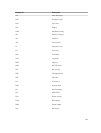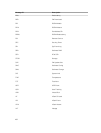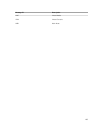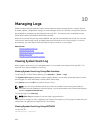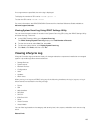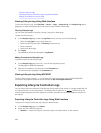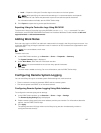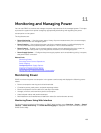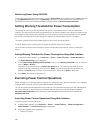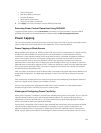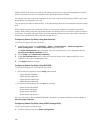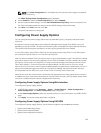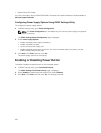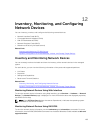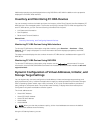
11
Monitoring and Managing Power
You can use iDRAC to monitor and manage the power requirements of the managed system. This helps
to protect the system from power outages by appropriately distributing and regulating the power
consumption on the system.
The key features are:
• Power Monitoring — View the power status, history of power measurements, the current averages,
peaks, and so on for the managed system.
• Power Capping — View and set the power cap for the managed system, including displaying the
minimum and maximum potential power consumption. This is a licensed feature.
• Power Control — Enables you to remotely perform power control operations (such as, power on,
power off, system reset, power cycle, and graceful shutdown) on the managed system.
• Power Supply Options — Configure the power supply options such as redundancy policy, hot spare,
and power factor correction.
Related Links
Monitoring Power
Executing Power Control Operations
Power Capping
Configuring Power Supply Options
Enabling or Disabling Power Button
Setting Warning Threshold for Power Consumption
Monitoring Power
iDRAC monitors the power consumption in the system continuously and displays the following power
values:
• Power consumption warning and critical thresholds.
• Cumulative power, peak power, and peak amperage values.
• Power consumption over the last hour, last day or last week.
• Average, minimum, and maximum power consumption.
• Historical peak values and peak timestamps.
• Peak headroom and instantaneous headroom values (for rack and tower servers).
Monitoring Power Using Web Interface
To view the power monitoring information, in iDRAC Web interface, go to Overview → Server → Power/
Thermal → Power Monitoring. The Power Monitoring page is displayed. For more information, see the
iDRAC Online Help.
189



